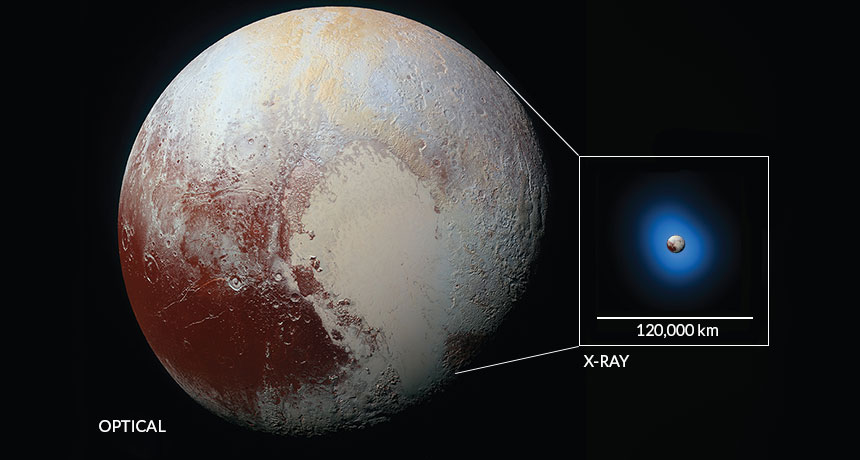X-ray mystery shrouds Pluto
Despite wrong conditions, handful-plus of photons detected streaming from dwarf planet

X-RAY SURPRISE An unexpected trickle of X-rays (blue) surrounds Pluto, possibly from a tail of gas dragging behind the dwarf planet.
X-ray: NASA, CXC, JHUAPL, R.McNutt et al; Optical: NASA, JHUAPL







